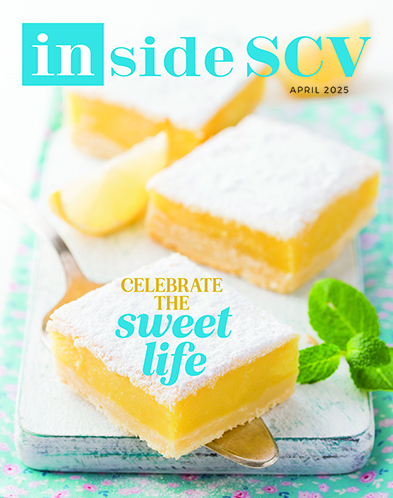YOUR HOME - EXTERIOR LOOKS
Saving Water with Style
June, 2015 - Issue #128
 courtesy of Shutterstock |
Water-saving Garden
If your yard is already landscaped and you're eying those 25-percent cuts with concern, there's hope yet. Your existing garden can, with some modifications, transition beautifully into a water-saving space.
One of the easiest ways to turn a traditionally-scaped yard into one that is gentle on water use is to install drip irrigation and cease use of inefficient old-school watering systems. Drip irrigation puts the water where it's needed - at the root level of your plants and trees. No droplets are sprayed and lost to evaporation and flexibility means that you'll never be "watering" the sidewalk. Plus, because drip irrigation is so customizable, you can use timers to ensure that higher-need plants and trees get watered more frequently while your established zones get watered less. You'll see a dramatic reduction in your water use with the help of drip irrigation. Bonus: these systems quickly pay for themselves in water savings.
Of course, those committed to truly cutting their water use should also consider replacing grass lawns. Hardscapes, softscapes and creativity can merge together for nearly-unlimited beauty and functionality. No one product or plant is the magic key by themselves to water savings but, with intelligent placement and selection of the right combination of plants and materials, they will keep you enjoying your outside living space while reducing maintenance, fertilizer costs and water use.
Lastly, swapping out plants that really don't belong in our dry climate for drought-friendly grasses, trees and flowers will move your water usage out of the "red" and into the "green." Since you're making the change anyway, consider replacing all or part of your edges and transitional spaces with edible plants like water-friendly herbs and greens. Or, take note of a growing SCV trend and use your space to grow vegetables, which - under the current water use requirements - can be watered daily if needed.
NV Landscape 286-8888
 courtesy of Shutterstock |
If you're ready to invest sweat equity into prepping your yard for improved long-term water use but you don't have the brains to match the brawn, you're in luck.
Xeriscaping is an attractive way to conserve water, reduce maintenance and increase the attractiveness of your outdoor spaces. And, by no coincidence, the Qualified California Certified Nursery Professionals at Green Thumb just so happen to be experts at it. Green Thumb boasts Four CCN pros, two Advanced CCN Pros and an arborist, along with a remarkable collection of irrigation, plants, trees and seeds that will have you well on your way to an affordable drought-friendly makeover.
Before you drop into the convenient Newhall location, make a plan. Are you tearing up your grass? Replacing borders? Do you want to add trees for shade, fruit or color? Will any of your current areas be hardscaped with concrete, pavers or gravel, or are you planning on putting your efforts into "softscape" plants and natural ground covers?
Then make a list of questions on topics like zone-specific watering and drip lines; watering to get your new plants established; and what flowers to choose for bright touches of color. If you're interested in eating any of your new additions, be sure to chat about the difference between potted and bare-root fruit trees; how to incorporate berries into your landscape; and the possibility of including a few raised beds into your space. You might also want to explore composting solutions and natural pesticides if you're going the edible-garden route.
Lastly, take pictures of your space on your phone for convenient access. Photos are worth a thousand words, or, in this case - lots of saved time and frustration. A Green Thumb professional will best be able to advise you about how to manage recessed areas; tricky hills and more after taking a peek at your pics.
Green Thumb 259-1072
|
||||||||||||||||||||||||||||





